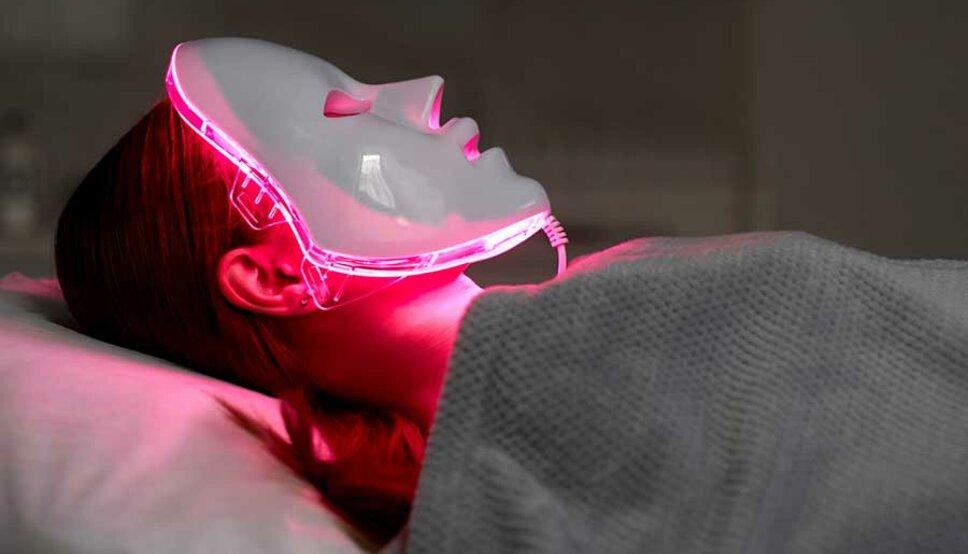Collagen is the most abundant protein in our body and the backbone of youthful, smooth skin. However, by the time we reach our 30s and 40s, collagen production naturally slows down, leading to fine lines, wrinkles, and sagging skin. Fortunately, science-backed solutions like red light therapy offer a natural, non-invasive way to restore collagen and fight signs of aging.
In this blog, we’ll dive into the science of collagen stimulation, explain how red light therapy improves collagen production, and how this leads to visible wrinkle reduction. If you’ve searched for "Red Light Therapy for Skin" or wondered about the anti-aging benefits of infrared red light therapy, this guide is for you.
What Is Collagen and Why Does It Matter?
Collagen is a structural protein found in the skin, tendons, bones, and connective tissue. It gives skin its:
-
Firmness
-
Elasticity
-
Smooth texture
With age, sun exposure, oxidative stress, and environmental toxins, collagen breaks down faster than it’s made. That’s where red light therapy for skin rejuvenation steps in to help.
How Red Light Therapy Stimulates Collagen Production
The secret lies in a process called photobiomodulation. Red and near-infrared (NIR) light wavelengths penetrate the skin and stimulate the mitochondria, which power our cells. This interaction leads to:
-
Increased ATP production (cellular energy)
-
Activation of fibroblasts, the cells responsible for making collagen
-
Improved circulation, delivering nutrients and oxygen
-
Reduced inflammation that breaks down collagen
As a result, new collagen fibers form, leading to smoother, firmer, and more youthful skin.
Best Wavelengths for Collagen and Wrinkles
| Wavelength | Type | Target Benefits |
| 630–660 nm | Red Light | Stimulates fibroblasts, reduces wrinkles |
| 810–850 nm | Near-Infrared | Increases blood flow, reduces inflammation |
| 940–1060 nm | Deep NIR | Heals deeper tissues (optional for face) |
These wavelengths are essential in any effective red light therapy treatment designed for collagen production.
Red Light Therapy vs. Traditional Anti-Aging Methods
| Treatment | Invasiveness | Risk Level | Downtime | Results |
| Red Light Therapy | Non-invasive | Low | None | Natural, gradual |
| Botox or Fillers | Invasive | Moderate | Days | Temporary |
| Laser Resurfacing | Moderate | High | Weeks | Aggressive |
| Anti-aging Creams | None | Low | None | Mild |
Unlike temporary fixes, red light therapy for skin benefits works from within and enhances the body’s own ability to create collagen.
Natural Anti-Aging with Red Light Therapy
Benefits of Red Light Therapy on Skin for collagen and wrinkle reduction include:
-
Fewer fine lines and crow’s feet
-
Plumper, hydrated skin
-
Improved skin elasticity
-
Smoother skin tone and texture
-
Reduction in sagging and loose skin
These benefits are why people increasingly turn to red light treatment for skin instead of synthetic creams or procedures.
How Often Should You Use It?
For maximum collagen production and wrinkle reduction:
-
3–5 sessions per week for the first 6–8 weeks
-
1–2 sessions weekly for maintenance
-
Each session should last 10–20 minutes per area
Whether done at a clinic or with an at-home device, consistency is key in achieving lasting red light therapy for skin rejuvenation.
Searching for Red Light Therapy?
When looking for “Red Light Therapy treatment”, make sure the provider offers:
-
Wavelengths between 630–850 nm
-
FDA-cleared, medical-grade devices
-
Personalized skin plans
-
Expertise in red light therapy for skin healing and anti-aging
Not all providers are created equal, so it’s important to verify their tools and methods.
Why Use Near-Infrared with Red Light?
While red light stimulates the upper layers of skin, near-infrared (NIR) light:
-
Reaches deeper skin layers
-
Boosts circulation
-
Enhances oxygenation
-
Reduces chronic inflammation
Together, they create the perfect environment for collagen synthesis and skin rejuvenation, a reason why people look up “benefits of infrared red light therapy” for anti-aging.
Clinical Research: Does It Really Work?
Studies have shown that regular exposure to red light therapy:
-
Increases collagen density by up to 30%
-
Reduces wrinkle depth by 15–30% over several months
-
Improves skin smoothness and elasticity significantly
That’s why red light therapy for skin healing isn’t just hype, it's science-backed.
FAQs
Q1: Can red light therapy really replace Botox?
A: It won’t give instant results like Botox, but it naturally stimulates collagen over time—making it a long-term solution for younger-looking skin.
Q2: Is it safe to use on sensitive or aging skin?
A: Yes. It’s non-invasive, UV-free, and safe for all skin types, especially mature or damaged skin.
Q3: How long before I see reduced wrinkles?
A: Most people notice improvements in 4–8 weeks, with deeper changes over 12 weeks of consistent use.
Q4: Does red light therapy thin the skin?
A: No. It actually strengthens skin by boosting collagen and elastin, unlike some lasers or peels that thin the epidermis.
Q5: Can I combine red light therapy with my anti-aging creams?
A: Absolutely. In fact, using red light before applying serums can enhance product absorption and performance.
Conclusion
Red light therapy is one of the most effective and natural methods to boost collagen and reduce wrinkles. By working at the cellular level, it empowers your body to repair and rejuvenate itself without invasive treatments or harmful side effects.
So, whether you’re exploring red light therapy for skin inflammation, skin healing, or long-term anti-aging results, you’re investing in a proven therapy backed by science.
Next time you search “red light therapy”, choose a clinic or device that targets collagen, offers the right wavelengths, and supports your skin’s health from the inside out.



